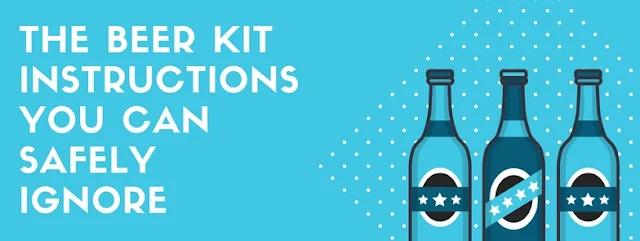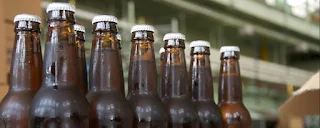
Think of an ordinary cake recipe.
If you follow its instructions to the letter, you'd likely get an OK tasting cake.
But a cake making expert will see that same cake recipe and see room for improvement and change things up and make a great tasting cake.
And it's the same with the instructions that come with an extract beer kit. If you make your beer following the can's instructions, you will simply make beer.
When a beer making expert sees those same instructions, they see opportunity to basically ignore those instructions and apply some tried and true beer making methods instead!
Let's have a look some of the things that standard set of instructions might say something like.

Bottle when the specific gravity is the same after two readings
If you are a first time brewer, you could be forgiven if you were wondering what specific gravity means. It's the reading taken with a hydrometer that demonstrates that alcohol is displacing water. If you have two readings the same a day a part, no more displacement is occurring and thus, fermentation is finished.
Right?
No.
While the yeast may have stopped making alcohol, the yeast is still doing it's job.
It is cleaning up what we will call the 'left overs'. Here's the instructions your beer kit does not give you.
Let your beer 'chill out' in the drum a bit longer.
While the bubbles may have stopped coming out the airlock, some pretty handy chemical reactions are still occurring and they will help make your beer taste even better.
Bottling too early (such as immediately post having two consecutive identical specific gravity readings) deprives your beer of this vital part of the secret to making good beer.
And here's the second reason to ignore your beer kit's instructions. They often suggest you can drink your beer after a week!
It is cleaning up what we will call the 'left overs'. Here's the instructions your beer kit does not give you.
Let your beer 'chill out' in the drum a bit longer.
While the bubbles may have stopped coming out the airlock, some pretty handy chemical reactions are still occurring and they will help make your beer taste even better.
Bottling too early (such as immediately post having two consecutive identical specific gravity readings) deprives your beer of this vital part of the secret to making good beer.
Don't drink your beer after a week, no matter what the instructions say
And here's the second reason to ignore your beer kit's instructions. They often suggest you can drink your beer after a week!
What?
Have you ever actually done this?
I have and I can tell you that a beer that has been conditioned for only a week is the roughest beer to drink around.
What happens when you bottle beer is that a secondary fermentation takes place.
What happens when you bottle beer is that a secondary fermentation takes place.
This is when the beer is carbonated for the second time, the difference being, the carbon dioxide is trapped inside the beer bottle.
While that is happening, the yeast is once again cleaning up the beer for you. Let the beer sit for a minimum of three weeks so that it is at its best for drinking.
So there are two reasons to ignore the beer kit's instructions and they basically come down to time. There is no need to rush your beer making experience. Let the beer sit for a week after fermentation has obviously finished and then let your beer condition even longer than what the instructions suggest.
So there are two reasons to ignore the beer kit's instructions and they basically come down to time. There is no need to rush your beer making experience. Let the beer sit for a week after fermentation has obviously finished and then let your beer condition even longer than what the instructions suggest.
You can of course always choose to ignore the advice in my step by step guide to brewing beer!
0 comments:
Post a Comment